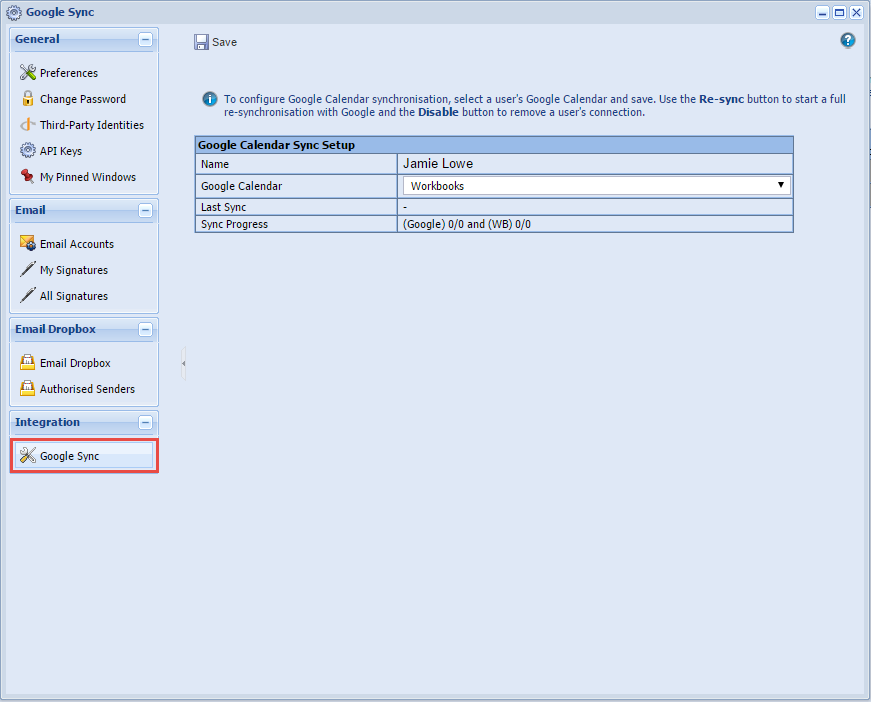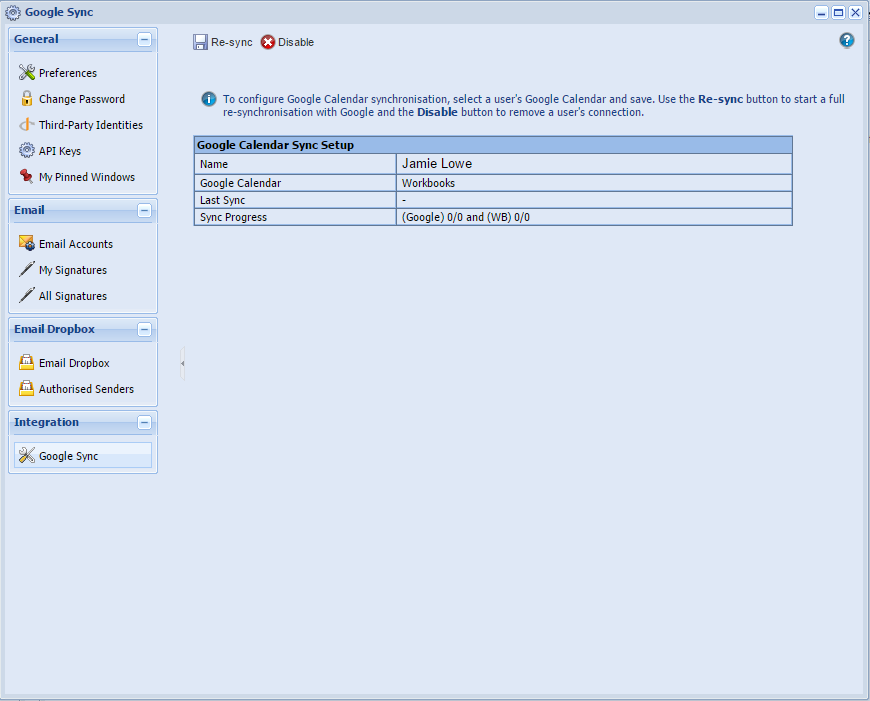- Welcome to the Knowledge Base
- Introduction
- Training
- Getting Started
- Preferences
- Activities
- Cases
- Forecasts & Quotas
- Importing Data
- Leads
-
Marketing
- Introduction to Marketing
- Marketing Campaigns
- Mailing Lists
- Products
- Mailshots
- Upload Library
- Templates
- Event Management
- Compliance Records
-
Spotler Integration
- What is Spotler?
- Navigating your Spotler homepage
- GatorMail
-
GatorLeads / Web Insights
- Tracking Code
- Setting up the Plugin
- Viewing Web Insights Data on your Form Layouts
- Domain Names and Online Activities
- Reporting incorrect Leads created through Web Insights
- Reporting on Web Insights data
- Using UTM Values
- Why aren’t Online Activities being created in the database?
- Why is GatorLeads recording online activities in a foreign language?
- GatorSurvey
- GatorWorkflow
- GatorPopup
- Opportunities
-
Integrations
- Mapping
- Electronic Signing Tools
- Creditsafe Integration
-
Zapier
- Introduction to Zapier
- Available Triggers and Actions
- Linking your Workbooks Account to Zapier
-
Setting up Zaps
- Posted Invoices to Xero Invoices
- Xero payments to Workbooks Tasks
- New Case to Google Drive folder
- New Case to Basecamp Project
- New Workbooks Case to JIRA Ticket
- Jira Issue to new Case
- 123FormBuilder Form Entry to Case
- Eventbrite Attendee to Sales Lead and Task
- Facebook Ad Leads to Sales Leads
- Wufoo Form Entry to Sales Lead
- Posted Credit Note to Task
- QuickBooks Online
- Survey Monkey responses to Tasks
- Multistep Zaps
-
Email Integrations
- Email Dropbox
- Workbooks Exchange Server Sync
- Workbooks Outlook Connector
- RevenueGrid Intelligence and Engage
-
Event & Webinar Integration Tools
- GoToWebinar
- ON24
- Microsoft Office
-
Outreach
- Installation
- Outreach Authentication
- Sync People to Outreach Prospects
- Sync Organisations to Outreach Accounts
- Sync Workbooks Opportunities to Outreach
- Sync Tasks/Activities from Workbooks to Outreach
- Sync Outreach Sequences to Workbooks
- Sync Outreach Sequence States to Workbooks
- Sync Outreach Sequence Step Numbers to Workbooks
- Sync Prospects/Accounts/Opportunities from Outreach to Workbooks
- Sync Outreach Tasks/Calls/Meetings to Workbooks
- Scribe/Workbooks Connector
- RingCentral
- Auditing
- Comments
- People & Organisations
- Projects
-
Reporting
- Introduction to Reporting
- Using Reports
- Charts
- Exporting Reports
- Advanced Reporting
- Report Snapshots
- Dashboards
-
Transaction Documents
-
Introduction to Transaction Documents
- Displaying & Adding Transaction Documents
- Copying Transaction Documents
- Transaction Documents Fields Help
- Transaction Documents Line Items Help
- Printing & Sending Transaction Documents
- Managing Transaction Document Currencies
- Managing Transaction Document Statuses
- Setting a Blank Default Currency on Transaction Documents
- Credit Notes
- Customer Orders
- Invoices
- Quotations
- Supplier Orders
- Contract Management
- Sagelink
-
Introduction to Transaction Documents
- Auditing
-
Configuration
- Introduction to System Administration
- Users & Security
- Preferences
- Database
- Accounting
- Email & Integration
-
Customisation
- Creating & Modifying Picklists
- Theme
-
Record Types
- Creating Custom Fields
- Report-based Custom Fields
- Linked Fields & Reference Fields
- Record Templates
- Form Layouts
- Customising relationships between parties
- Opportunity Stages
- Custom Records
- Automation
- PDF Configuration
- Contact Support
- Releases & Roadmap
Synchronising your Google Calendar with Workbooks
The synchronisation between your Workbooks Meetings and your Google Calendar is completed by automatic scheduled processes once you have completed the initial integration, which is broken down into three key areas. The guide below gives details on each of these. Follow the links below in order to access the relevant section:
- Creating your Workbooks specific Google Calendar - A vital step of the process is creating a specific Google Calendar for Workbooks to synchronise with.
- Logging into Workbooks via Google - By logging into Workbooks via Google, Workbooks knows which Google Account to synchronise with.
- Managing your Synchronised Calendar - Choosing your newly created Google Calendar as the target for the integration, and de-synchronising it should the need arise.
Creating your Workbooks specific Google Calendar
This step is necessary, as Workbooks will synchronise every Meeting from the past 6 months that is not marked as "Private" into Workbooks. It is highly recommended to use a fresh Google Calendar to prevent duplicates of old meetings being imported into Workbooks or Google.
Each user will need to create a Google Calendar for Workbooks to synchronise with. It is important to give the calendar a logical name that will allow you and a system administrator to easily identify which calendar is the one you have created for this purpose. An example of a good naming convention for you to follow when naming your calendar is "<YOUR NAME> - Workbooks". Information on how to create a new calendar can be found here.
Logging into Workbooks via Google
Once the system administrator has installed the Workbooks app to your company's Google account, each user will next need to login in Workbooks using their Google account in order for them to have their Workbooks calendar synchronise with the Google calendar they have created.
For more information on how to log on to Workbooks using a Google account, see our Knowledge Base article on logging in to Workbooks, here.
Managing your Synchronised Calendar
Synchronising your Calendar
When you have created the Google Calendar you wish to synchronise with Workbooks and logged in to Workbooks using your Google Account, you are able to synchronise your calendars.
In order to do this click Start > Preferences > Integration > Google Sync:
NOTE: This window may take a few moments to populate as it is a web process.

From here select the name of the Google Calendar that you have created from the Google Calendar picklist (in the above screenshot it is called "Workbooks"). Click Save. Once your selection has been saved, you will see the following screen:
NOTE: There is a re-sync button at the top of this screen. IT SHOULD NOT BE PRESSED. It does not force a manual synchronisation of meetings. It could result in created meetings not being synced.

De-synchronising your Calendar
If you wish to either disable or synchronise a different Google Calendar to your Workbooks account, then you need to click the Disable button. You will see the following screen:

In order to cancel this process click the Cancel button. If you wish to proceed, ensure you take note of the Delete synced records checkbox. If you choose to select this box then any Meetings synchronised to Workbooks from your Google Calendar will be deleted from Workbooks, and vice versa. This means that all Meetings will be preserved in whichever environment they were originally created, and only the synchronised copies will be deleted. This prevents duplicate copies being made if the same calendar is synchronised to Workbooks again.
After considering this and making the appropriate selection click the Disable button if you wish to proceed with the process and the Cancel button if you don't. After you have completed this process you will be able to synchronise a new calendar with Workbooks via the same process used previously.
Related content

